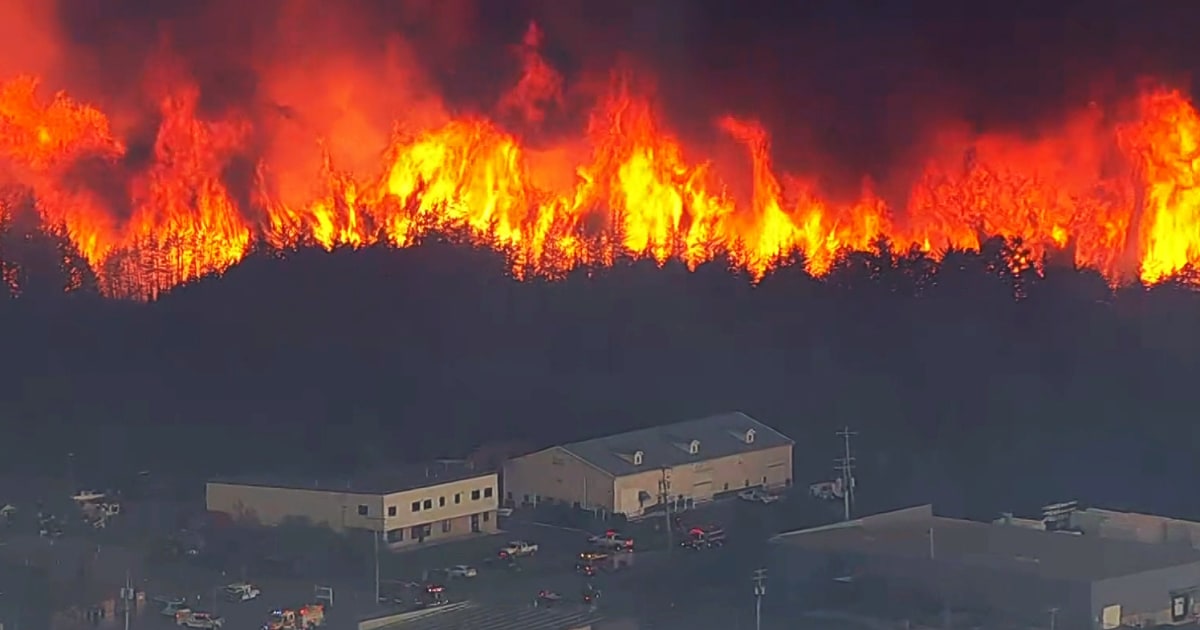New Jersey Wildfire Expands Beyond 8,000 Acres: Evacuations and Highway Closures Follow
A rapidly growing wildfire in New Jersey has consumed more than 8,000 acres, forcing evacuations and shutting down major highways as firefighters battle to contain the blaze. The fire, which ignited on Tuesday afternoon in Wharton State Forest, continues to spread due to dry conditions and shifting winds. Authorities have declared a state of emergency in Burlington County, urging residents to heed evacuation orders while assessing the environmental and public safety risks.
Emergency Response and Evacuation Efforts
Local fire departments, alongside state and federal agencies, have deployed over 200 personnel to combat the flames. The New Jersey Forest Fire Service reported that the wildfire has already surpassed the size of the 2022 Mullica River fire, making it one of the largest in recent state history. Evacuation orders are in effect for several communities, including Batsto Village and surrounding areas.
- Highway Closures: Portions of Route 206 and the Atlantic City Expressway have been shut down to facilitate firefighting operations.
- Shelters: Red Cross has opened temporary shelters in Hammonton and Medford for displaced residents.
- Air Support: Helicopters and air tankers are conducting water drops to slow the fire’s advance.
“This is an all-hands-on-deck situation,” said Greg McLaughlin, Chief of the New Jersey Forest Fire Service. “The combination of low humidity and wind gusts up to 20 mph has created extremely dangerous conditions. Our priority is protecting lives and property.”
Environmental and Health Concerns
The wildfire has raised alarms about air quality and ecological damage. Smoke plumes visible from miles away have triggered health warnings for vulnerable populations, including children and the elderly. The New Jersey Department of Environmental Protection (NJDEP) has issued a Code Orange air quality alert, urging residents to limit outdoor activities.
Dr. Emily Carter, an environmental scientist at Rutgers University, emphasized the long-term risks: “Wildfires of this magnitude release significant carbon emissions and can devastate local ecosystems. The Pine Barrens, where this fire is burning, is a unique habitat that may take decades to recover.”
Key environmental impacts include:
- Destruction of endangered species habitats, including the Pine Barrens tree frog.
- Potential contamination of water sources due to ash runoff.
- Increased soil erosion in burned areas.
Community and Economic Fallout
Local businesses, particularly those reliant on tourism, are bracing for losses. The Wharton State Forest area attracts thousands of visitors annually for hiking, camping, and kayaking. With the wildfire disrupting operations, small business owners fear a prolonged downturn.
“Summer is our busiest season, and this couldn’t have happened at a worse time,” said Maria Lopez, owner of a canoe rental company in Batsto. “We’re praying the fire gets under control soon, but the damage might already be done.”
Meanwhile, residents like Tom Reynolds, who evacuated his home in Medford Lakes, described chaotic scenes: “We grabbed our pets and important documents and left within minutes. The sky was orange, and you could hear the trees cracking. It’s something you never think will happen to you.”
What’s Next for New Jersey’s Wildfire Crisis?
Officials warn that the wildfire may continue expanding unless weather conditions improve. Forecasts predict no immediate rainfall, and temperatures are expected to remain above average. Governor Phil Murphy is scheduled to visit the affected areas tomorrow and has pledged additional resources.
Looking ahead, experts stress the need for proactive measures:
- Increased funding for wildfire prevention programs.
- Public education campaigns on fire safety.
- Expansion of controlled burn initiatives to reduce fuel loads.
For now, residents are encouraged to monitor official updates via the NJDEP Forest Fire Service and adhere to evacuation directives. As Chief McLaughlin noted, “The biggest mistake anyone can make is underestimating how quickly these fires can change direction.”
As New Jersey faces this escalating crisis, the wildfire serves as a stark reminder of the growing threat posed by climate change and urban encroachment on wildlands. Community solidarity and swift action will be critical in the days ahead.
See more Update My News



